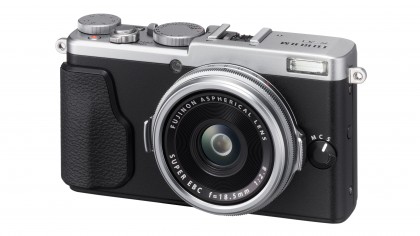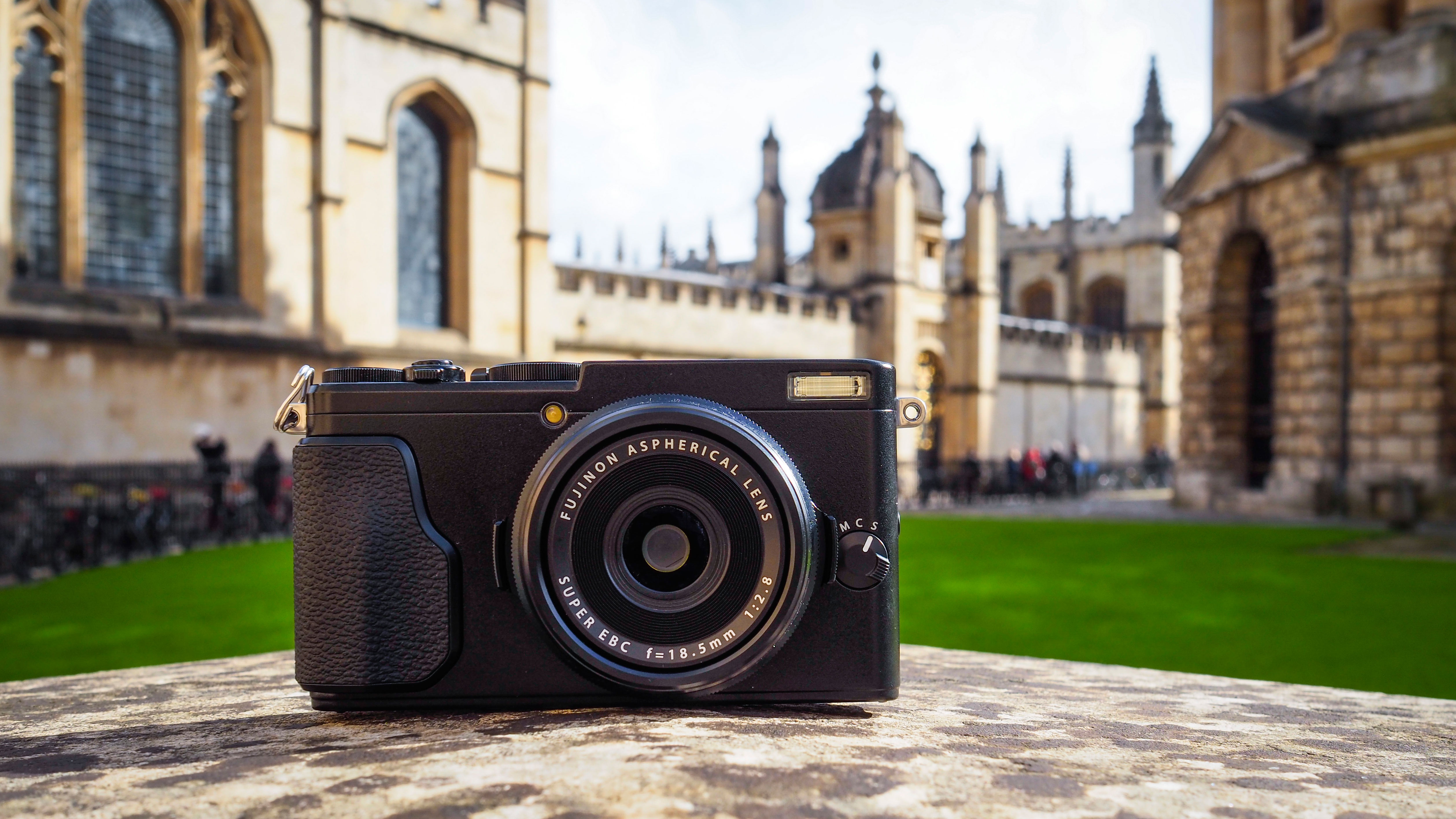TechRadar Verdict
The X70 offers traditional exposure controls and an APS-C format sensor in compact form, and it delivers images that are every bit as good as those from bigger X-series cameras. It's a little beauty.
Pros
- +
High quality APS-C format sensor and processing engine
- +
Tilting touch-screen
- +
Traditional exposure controls
Cons
- -
Fixed focal length
- -
No viewfinder, Limited touch-screen functionality
Why you can trust TechRadar
Fuji's compact cameras have proved very popular, but some find the APS-C format X100T too big and the 2/3-inch sensor in the X30 too small. Well the X70 could be just right. This new camera has the same 16.3Mp APS-C format X-Trans CMOS II sensor and EXR Processor II as the X100T. However, these are joined by a new Fujinon 18.5mm f/2.8 lens which gives an effective focal length of 28mm, significantly wider than the 35mm (equivalent) lens on the X100T. There are also digital 'teleconverter' options that crop images to replicate 35mm and 50mm framing with interpolation to maintain image size.

The new camera is aimed at enthusiast and professional photographers who want a compact camera with the better than average image quality that a larger sensor provides. To suit this market there's the traditional styling and control of earlier X-series compacts with a lens ring for aperture adjustment. This has markings running in whole stops from f/2.8 to f/16 – and adjustment in 1/3 stops.
The aperture is created using an iris that has nine blades which should ensure a smoother, circular shape that helps give out of focus highlights a pleasantly rounded shape for attractive bokeh. The lens comprises seven elements in five groups with two high performance aspherical elements and Fujinon's HT-EBC coating to reduce flare and ghosting. Fuji has opted for a non-collapsible lens to speed the camera's start-up time.
Like the Fuji X100T, the X70 has a shutter speed dial on the top-plate. This has settings running from 1sec to 1/4000 sec as well as Bulb, Time and Auto settings. As well as contributing to the camera's retro look, this dial makes it possible to set and check shutter speed without turning it on or looking at the rear screen.

In addition to the mechanical shutter, the X70 has an electronic shutter which allows silent shooting and shutter speeds up to 1/32000sec (down to 1sec maximum exposure). Shutter speeds beyond the dial's marked settings are selected using the rear jog-wheel above the thumbrest.
If both the aperture ring and shutter speed dial are on 'A' for automatic, the camera is in program mode and will set exposure automatically. If either one is set to a specific value the camera is in aperture or shutter priority respectively. Alternatively you can set both to a specific value and take manual control over exposure. For less experienced photographers and those days when you want to let the camera do the thinking, there's a fully automatic option which is activated with a flick of the switch under the shutter speed dial.
Significantly, the X70 doesn't have a viewfinder like the X100T, but there is an optional optical viewfinder with 21mm and 28mm bright lines. Without the viewfinder, images must be composed on the 3-inch 1,040,000-dot screen, which is touch-sensitive and capable of being tipped up through 180 degrees for shooting selfies, as well as downwards for easier viewing from below.
Sign up for breaking news, reviews, opinion, top tech deals, and more.

The X70 has the same hybrid (phase and contrast detection) autofocus (AF) system as the X100T, which means that there are single point, Zone and Wide/Tracking modes, along with 3D Tracking and Eye-detection. The claimed AF response time is 0.08sec and there's a maximum continuous shooting speed of 8fps (frames per second). It's also possible to focus manually and Focus Peaking and a Digital Split Image are available to help if required.
Fuji's popular Film Simulations modes are available, including the relatively recent Classic Chrome, but the new black and white Acros mode introduced with the Fuji X-Pro2 doesn't make an appearance.
Full HD (1920 x 1080) video recording is possible at 60, 50, 30, 25 or 24p for up to 14 minutes while HD (1280 x 720) is possible for up to 27 minutes. There's a socket to connect an external microphone, but there isn't one for headphones.
Sensitivity may be set in the native range of ISO 20–6400, with JPEG-only expansion options of ISO 200, 12,800, 25,600 and 51,200 and images (raw and JPEG) are saved to an SD/SDHC/SDXC (UHS-1) card in the single port.
